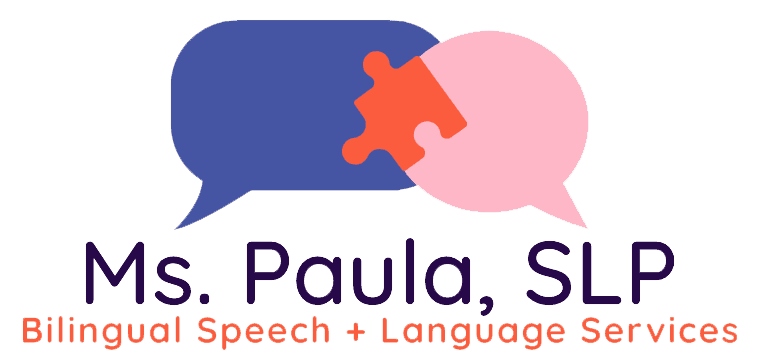When your child is young, stuttering can be a normal, developmental occurrence. In fact, stuttering amongst children is fairly common: about 3 million Americans stutter and about 5 to 10 percent of all children will stutter for a period of time at some point in their lives.
Although children who stutter are cute, persistent stuttering that does not go away can actually put your child at a disadvantage in the long-term. Research shows that when stuttering is left untreated into adulthood, it is associated with social anxiety, poorer communication skills, poor labor market outcomes (i.e., lower salaries) and as a result, a lower standard of living.
Luckily, most stuttering that occurs in childhood resolves itself. In fact, about 75 percent of childhood stuttering resolves itself without treatment. Likewise, of the 25 percent of children for whom stuttering persists, it can be diagnosed and treated with evidence-based practices.
Treatment for stuttering in both children and adults will require a thorough evaluation conducted by a trained speech therapist. For bilingual clients, we recommend bilingual assessment and treatment. People who stutter often stutter more in one language than another. For this reason, a clinician who is able to understand and explain techniques for more fluent speech in both languages is preferred.
Developmental Stuttering
About 75% of stuttering is non-clinical. In other words, most young children who speak disfluently will outgrow their stuttering during childhood, and it will not impact their development of crucial communication skills. This sort of stuttering is known as “developmental stuttering.” It is typical and usually does not persist for longer than 6-12 months.
Non-developmental stuttering may persist and is characterized by certain types of disfluency. Yet a third type of stuttering is referred to as “neurogenic stuttering,” which can occur after various different injuries to the brain, such as head trauma or a stroke.
Developmental stuttering may occur when there is a mismatch between the development of a child’s speech abilities and their verbal demands. Specifically, when your child’s desire to speak exceeds their speaking abilities, developmental stuttering arises.
Developmental stuttering isn’t considered clinical unless it survives past childhood into adolescence and adulthood. Clinical developmental stuttering can be diagnosed in childhood and is in fact most effectively treated if identified during early childhood.
Diagnosing Developmental Stuttering

- Your child’s stutter has lasted 6 months or longer
- You have a family history of stuttering
- Your child exhibits other speech or language problems
- Your child has other auditory processing disorders
- Your child has high-expectations for themselves
- Your child is overly sensitive
- Your child has trouble sustaining attention
To a speech-language pathologist, each of these scenarios, coupled with stuttering, are signs that your child’s stuttering problems will last later into life unless they are treated. Luckily, effective treatment is available for stutterers.
Treatment: Bilingual Speech Therapy
The most common and effective form of treatment for developmental stuttering is speech therapy. Speech therapy essentially gives stutterers the tools they need to drastically reduce the degree to which they stutter during speech. Such strategies may include speaking more slowly, regulating breathing, and the gradual introduction to children into using complex sentences in their speech.
However, ordinary speech therapy tends to ignore the fact that bilingual children might be more likely to deal with stuttering than children who only speak one language.
Luckily, bilingual speech therapy can help to remedy this gap in the treatment of stuttering. The strategies which bilingual speech therapy uses are similar to conventional speech therapy, only differing in its recognition of the unique needs of bilingual stutterers.
For instance, bilingual speech therapy helps children focus on the structures of the two languages they speak. Specifically, it’s been shown that focusing on the similarities between the two languages is an effective tool for treating bilingual stuttering. Other strategies may include encouraging the child to focus on perfecting their primary language. For instance, if your child’s primary language is English, but they also speak Spanish, Gujarati, or Hindi, a bilingual speech therapist may suggest that your child give more of their efforts to developing their English-speaking skills at the expense of their Spanish, Gujarati, or Hindi-speaking skills. All the while, bilingual speech therapy implements strategies to ensure that the child does not lose their grasp of their second language, even when they have taken emphasis off of using it. Finally, bilingual speech therapists teach bilingual children how to seamlessly interchange between their two languages –which is often a great source of stuttering in itself. These tools and others that are integral to bilingual speech therapy, have been shown in multiple studies to effectively reduce stuttering in bilingual children.
Bilingual speech therapy can effectively treat stuttering in bilingual children, making a long-lasting positive impact in their lives and in their ability to communicate. Stuttering is just as treatable in bilingual children as it is in monolingual children, and we have bilingual speech therapy to thank for that.

